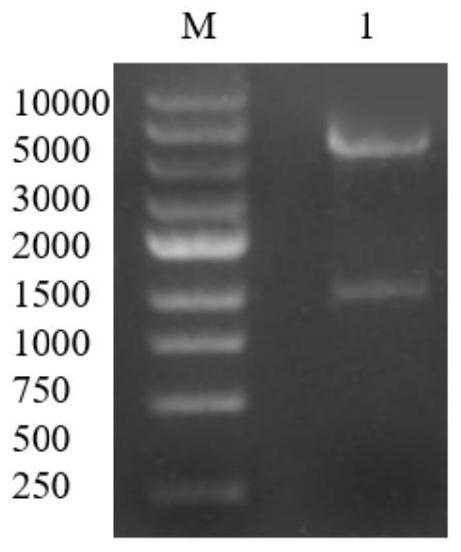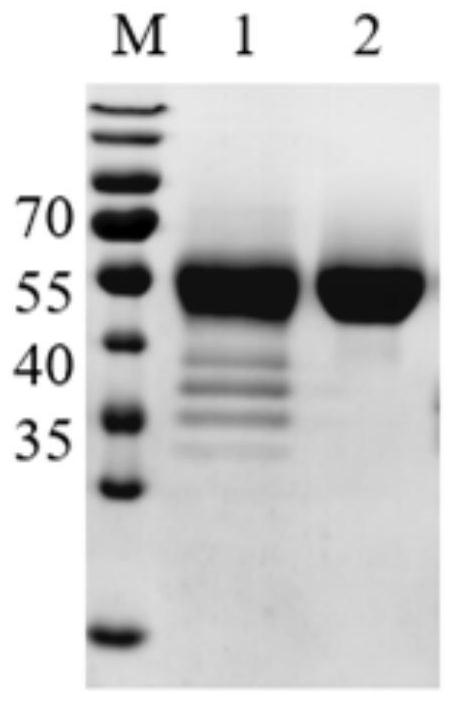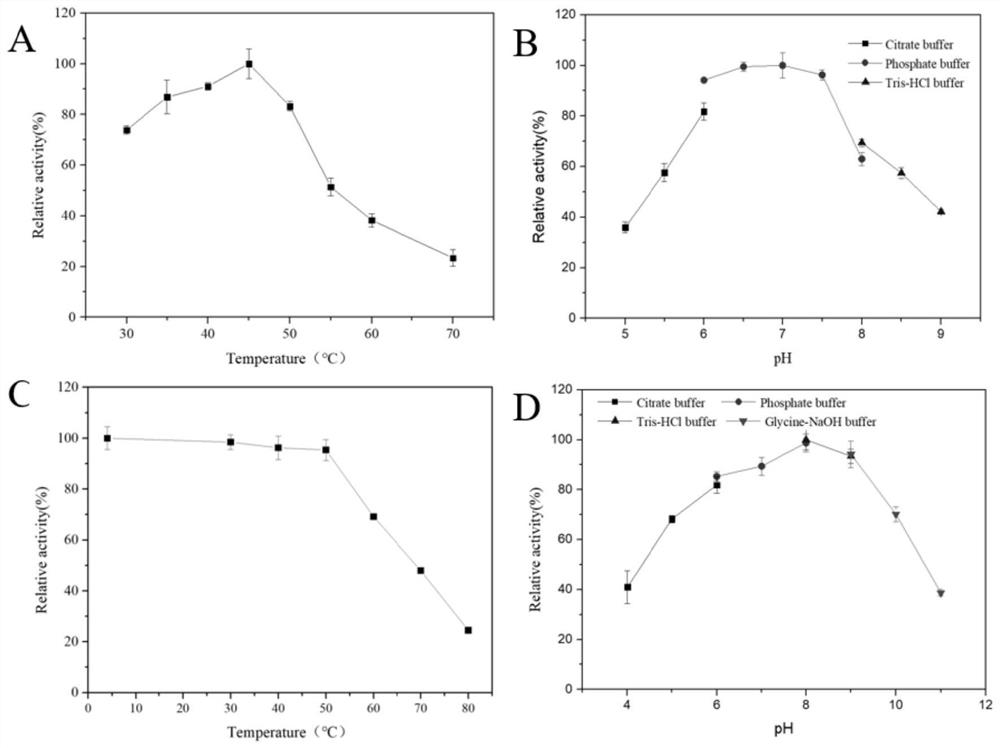Application of bacillus halophilus xylanase in improvement of flour processing quality
A technology of lactobacillus and xylanase, which is applied in the fields of genetic engineering and grain science to achieve the effects of improving quality, simplifying purification and improving microstructure
- Summary
- Abstract
- Description
- Claims
- Application Information
AI Technical Summary
Problems solved by technology
Method used
Image
Examples
Embodiment 1
[0042] Example 1 Xylanase gene codon optimization and cloning
[0043] Using the whole gene synthesis technology, the whole gene sequence of Pichia pastoris codon-optimized Halolactibacillus miurensis xylanase was synthesized. Wherein, the amino acid sequence of the xylanase from Lactobacillus salinus is shown in SEQ ID NO.1, and the base sequence encoding the xylanase from Lactobacillus salinus is shown in SEQ ID NO.2. Afterwards, the xylanase sequence of Lactobacillus salinus and the carrier plasmid pPICZαA were double-digested with EcoRI and NotI, and ligated with T4 DNase, and the ligated product was transformed into Escherichia coli DH5α competent cells. Pick a single colony, then extract the plasmid for electrophoresis detection, and store the plasmid at -20°C. Then EcoRI and NotI were used to digest and detect the target fragment ( figure 1 ), and then send the plasmid to the company for sequencing. The correctly sequenced plasmid is the codon-optimized recombinant ex...
Embodiment 2
[0044] Induced expression and purification of embodiment 2 xylanase
[0045] 1. Induced expression
[0046]The recombinant expression vector pPICZαA-hxyl obtained in Example 1 was linearized with SacI, and transformed into the host cell Pichia pastoris X33 by electroporation. Perform colony PCR verification on the single colony on the transformed resistance screening plate to ensure the integration of the exogenous gene. Inoculate the screened recombinant Pichia pastoris in 10mL BMGY liquid medium, shake and culture overnight at 30°C, 250rpm; after centrifugation at 3000g at room temperature for 2min, collect the bacteria, transfer it to BMMY medium, and transfer Bacteria solution OD 600 0.5-1.0; 30°C, 250rpm to continue culturing for 24-144h, during which samples were taken every 24h and methanol was added to the medium to 1.0% v / v. After the culture was completed, solid-liquid separation was performed to obtain the fermentation supernatant. SDS-PAGE analysis showed that t...
Embodiment 3
[0049] Embodiment 3 xylanase enzymatic properties assay
[0050] 1. Determination of Enzyme Activity
[0051] (1) Draw a standard curve
[0052] Accurately weigh 0.5g of xylose, and adjust the volume to 100mL with a pH7.0 phosphate buffer solution to obtain a solution of 5mg / mL xylose. Take seven 2mL EP tubes, add 0.00mL, 0.01mL, 0.02mL, 0.03mL, 0.04mL, 0.05mL, 0.10mL xylose standard solution, and add distilled water to 0.5mL. Take 0.2mL xylose diluent respectively in 2mL EP tubes, add 0.30mL DNS reagent and shake well, immediately place in boiling water for 5min to develop color. After cooling, take 200 μL in a microtiter plate, measure its absorbance value at 540 nm, and draw a standard curve with the xylose content as the abscissa and the absorbance as the ordinate.
[0053] DNS reagent: Dissolve 6.3g of 3,5-dinitrosalicylic acid (DNS) in 400mL of distilled water, gradually add 21g of sodium hydroxide, sequentially add 185g of potassium sodium tartrate tetrahydrate, 5.0g...
PUM
 Login to View More
Login to View More Abstract
Description
Claims
Application Information
 Login to View More
Login to View More - R&D
- Intellectual Property
- Life Sciences
- Materials
- Tech Scout
- Unparalleled Data Quality
- Higher Quality Content
- 60% Fewer Hallucinations
Browse by: Latest US Patents, China's latest patents, Technical Efficacy Thesaurus, Application Domain, Technology Topic, Popular Technical Reports.
© 2025 PatSnap. All rights reserved.Legal|Privacy policy|Modern Slavery Act Transparency Statement|Sitemap|About US| Contact US: help@patsnap.com



